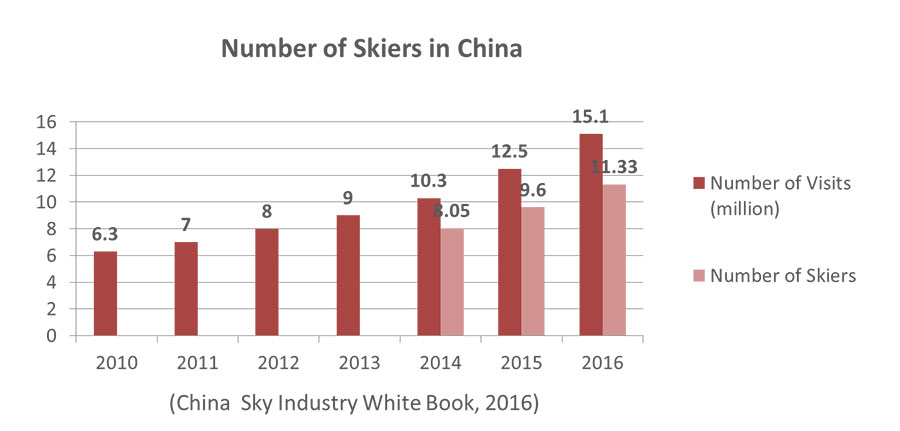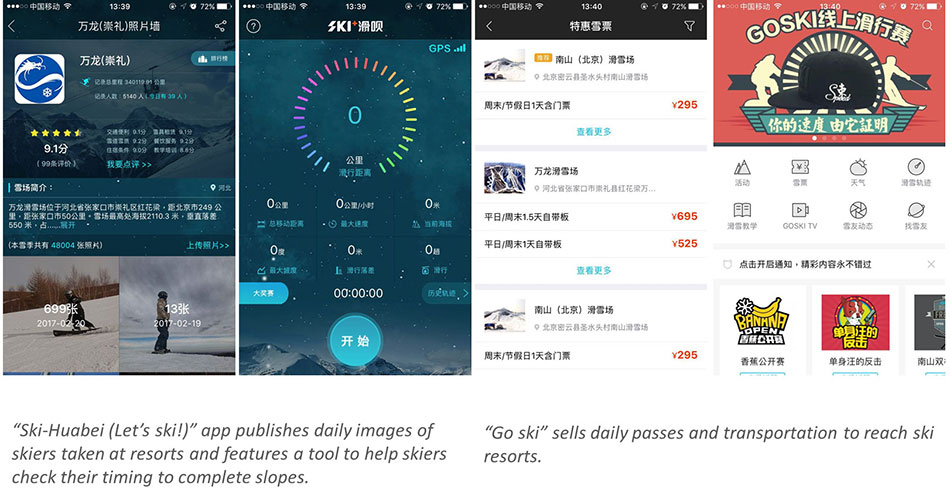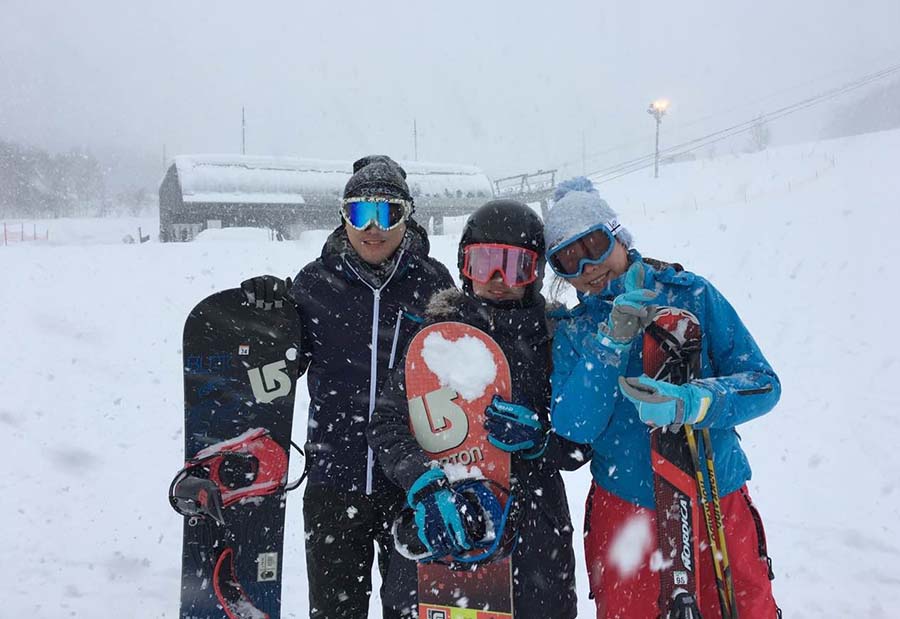Exercise is fast becoming part of Chinese citizens’ lifestyle, as they grow more affluent and increasingly conscious of the health benefits an active life brings.
According to the Economist Corporate Network, Beijing has the most active population, who exercises at least once per week, followed by residents of wealthy first and second tier coastal cities. The number of marathons, running groups, as well as of people interested in diving, hiking and cycling is growing quickly and so is the interest in winter sports, particularly after Beijing’s successful bid as the host of the 2022 Winter Olympics.
The total number of skiers in China is still in its infancy with only 0.4% of the population practicing the winter sport. In comparison, 25% of Northern Europeans actively ski. But with many things in China, the pace of the sport’s uptake has been quick.
The total number of domestic skiers reached 11,300,000 visitors in the 2015-2016 winter season, an 18% increase from the previous year, and nearly doubled since the 2009-2010 season. The total number of ski areas has also grown to 646 from 568 in 2015, with big real estate development players such as Wanda and Vanke investing in large scale ski resorts in Changbaishan and Songhuahu respectively (both locations are in the North Eastern province of Jilin). For more information about domestic travel, download our translation of the report ChinaSkiIndustryWhiteBook2016.

Interview with Ms Joy Chen – Beijing resident and Millennial
Today we chat with Joy Chen, colleague and Marketing Manager at Dragon Trail Interactive, who shares with us her interest in skiing, her passion for traveling overseas and her plans to combine the two.
1. How did you become interested in winter sports and when was the first time you went skiing?
It was 2014. At the time I was working for Elong (one of China’s largest OTAs) and I was invited to go to the Nanshan ski resort for a media event organized by Destination Canada. Once there I joined a small group of people and an instructor and I went out on the slopes for the first time. I’ve liked skiing ever since.
2. How popular is skiing from your personal experience?
I feel that skiing or snowboarding, which I have later switched to, is not that uncommon at least here in Beijing. Many of my friends also snowboard and we often go skiing together on the weekends. Obviously skiing in China is not as mature as in other countries. Most of the people on the slopes are first timers with an interest in trying something new. And they are mostly millennials like me. I do see families with kids from time to time, but they are not that many.
There is some level of perception that skiing is dangerous and this might be putting a few people off from the sport. This year there have been a couple of accidents on the slopes, and they have been widely covered in the media. But I personally think that overall ski resorts are trying to educate people on safety and in Chongli, for instance, it is mandatory to wear a helmet.
3. How often do you go skiing and how do you organize your trips?
I try to go skiing 5 times per season. Sometimes I will go away for a weekend or just for a day trip either to Nanshan or to Chongli*, a larger ski resort in Hebei Province. For recommendations about ski resorts, I normally listen to my most experienced friends, and lately I have started using an app called “Go Ski”, which has many video tutorials to learn how to ski. I also use the app to check the weather report, buy discounted daily ski passes and transportation to reach the resorts.
I’ve also used the “Ski-Huabei (Let’s ski!)” app. This app is popular because you can track the speed and time of your downhills and you can immediately see how you are ranking in comparison to other people. Skiers also like checking the app’s photo gallery to see if Ski-Huabei has taken their pictures on the trails. Generally speaking both apps are mainly focused on the domestic market, but I have seen some information about Japan on “Go Ski”.

4. Have you ever skied overseas?
This year I traveled to Japan for Chinese New Year and I went all the way up to Sapporo. I was strapped for time so I only ended up skiing only one day, but I am considering going back for a week.
Ski resorts around Beijing are very busy and use artificial snow, so the surface is often quite icy. In Japan, on the other hand, the snow is soft and powdery. I also avoided the most popular ski resort, Hirafu, and opted for Sapporo Teine, which was great because it was not busy at all. Despite seeing many Chinese travelers in Sapporo, I did not see many Chinese tourists skiing.
Another advantage is that skiing in Japan is much cheaper than in China. A daily ski pass in Nanshan costs approximately 300 RMB (it includes rental fees), whereas in Chongli it will cost 500 RMB per day. Once you add in 50 to 150 RMB for transportation, 50-100RMB for food and 200 RMB for accommodation, a weekend on the snow ends up being quite expensive in China.
5. Would you consider a ski holiday overseas ? And where would you like to go?
Going skiing overseas is still not as popular. None of my friends has skied overseas, but it is probably just temporary. Japan is with no doubt the most popular skiing destination in China, followed by South Korea, also because they are so close. Switzerland, Whistler Canada and New Zealand are all well known skiing destinations and they are high on my wish list.
*Nanshan is 80 km north east of Beijing and Chongli ski resort is approximately 170 km north west of the city, in Hebei province, which will stage most of the skiing events during the 2022 Winter Olympics.

Sign up for our free newsletter to keep up to date on our latest news
We do not share your details with any third parties. View our privacy policy.
This website or its third party tools use cookies, which are necessary to its functioning and required to achieve the purposes illustrated in the cookie policy. If you want to know more or withdraw your consent to all or some of the cookies, please refer to the cookie policy. By closing this banner, scrolling this page, clicking a link or continuing to browse otherwise, you agree to the use of cookies.